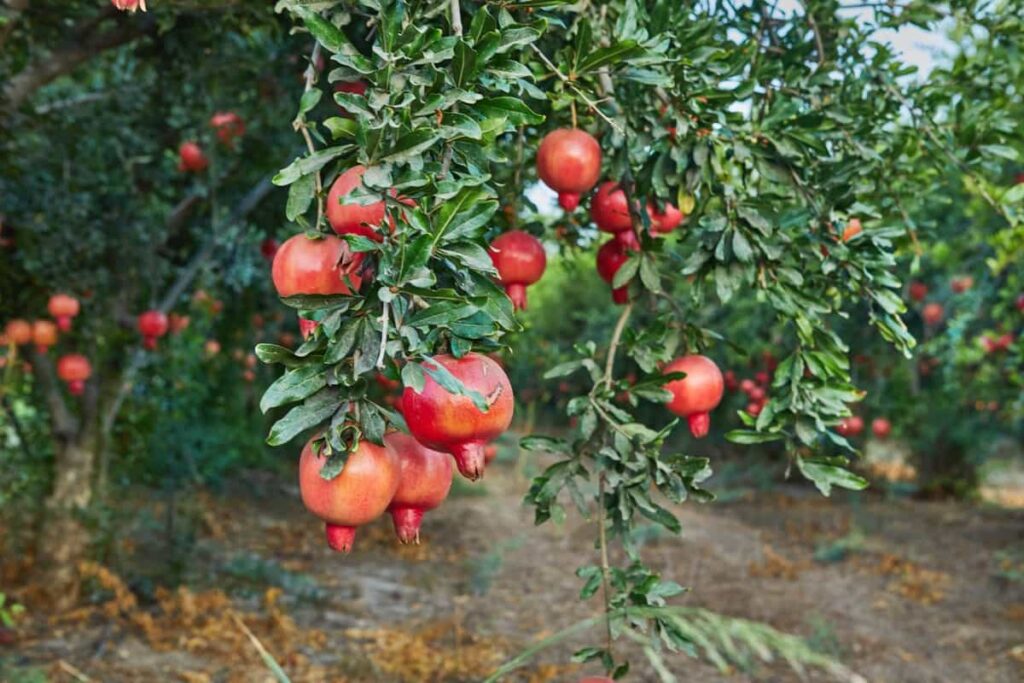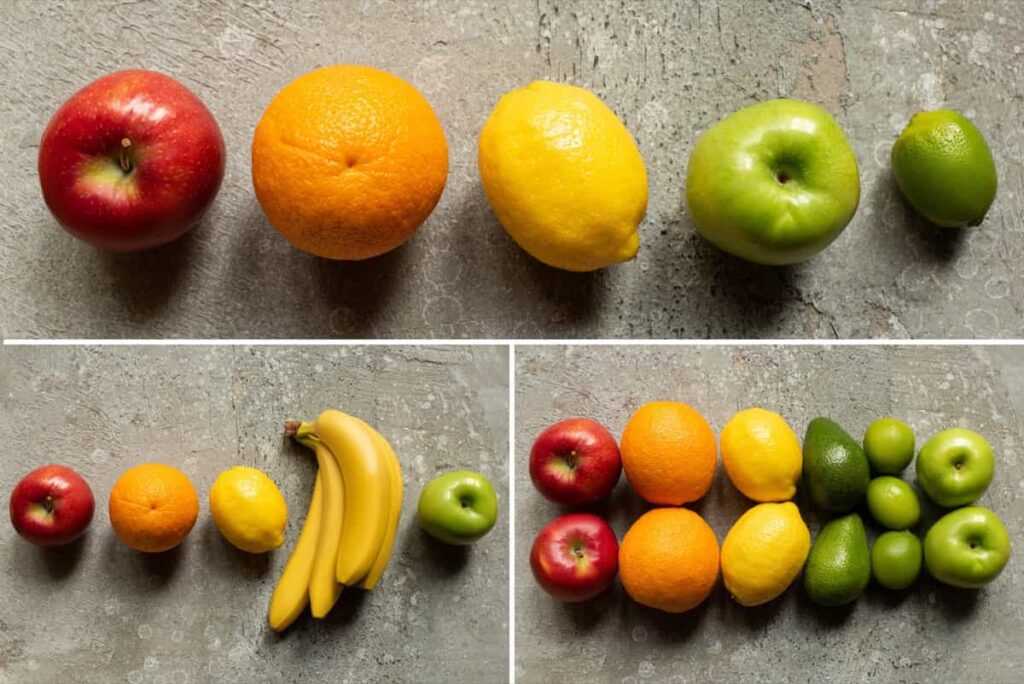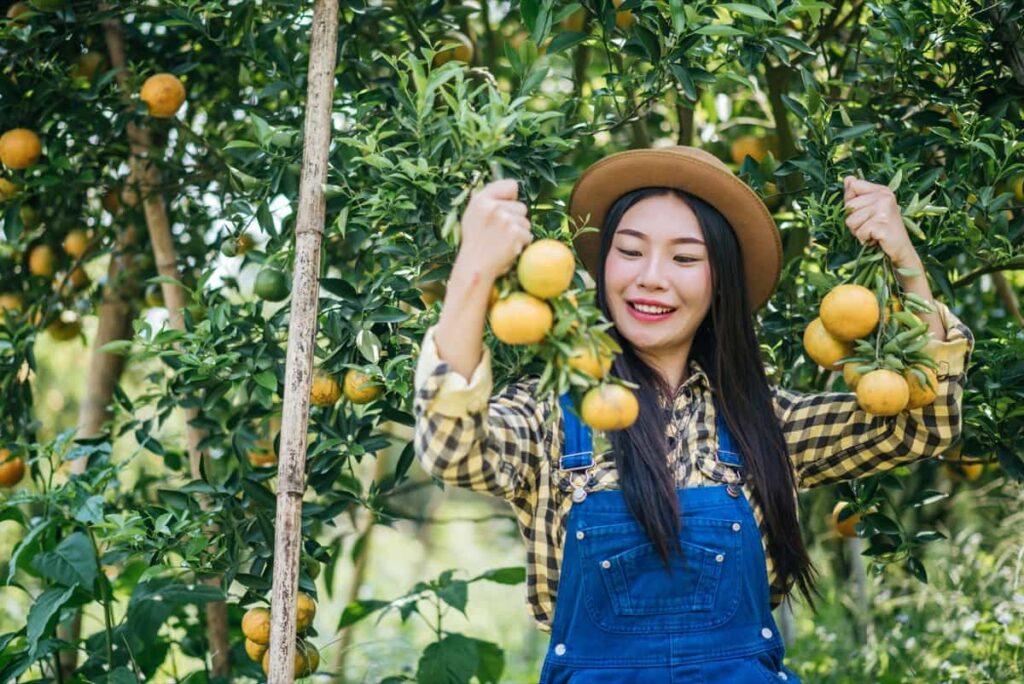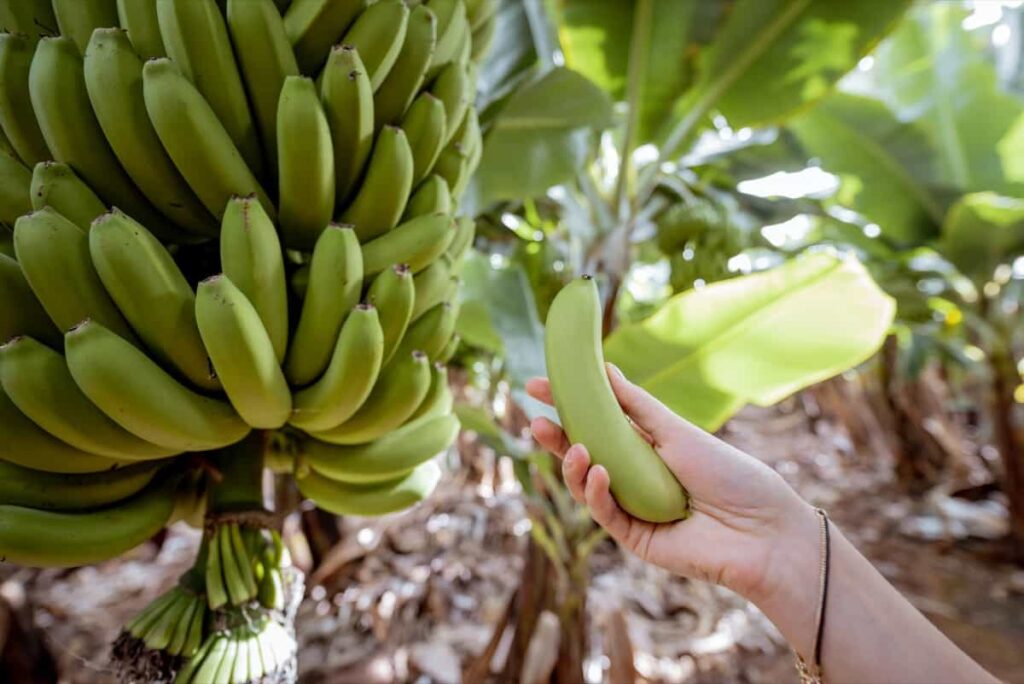Managing fruit size is crucial in agriculture and gardening. Achieving bigger fruits involves understanding plant biology and employing effective techniques. This blog explores proven strategies for increasing fruit size, from optimizing soil conditions to precise watering and fertilization. We’ll delve into practical methods that enhance fruit growth, ensuring gardeners and farmers can enjoy larger, healthier produce. Join us as we uncover the secrets to maximizing fruit size through simple yet impactful approaches.

Understanding the Concept of Fruit Size Management
Fruit size is a critical factor that determines the quality and marketability of many fruits, especially citrus. Fruit size is influenced by a complex interaction of genetic, environmental, and cultural factors and can vary significantly from season to season. Fruit size management is the process of applying various strategies and practices to optimize fruit size and achieve consistent yields of high-quality fruits.
Importance of Fruit Size Management in Agriculture
- It can increase the profitability of fruit production by meeting the market demand for large and uniform fruits, which usually have higher prices and lower marketing costs.
- It can reduce the risk of crop losses due to overproduction, under-sizing, sunburn, pests, and diseases, which are more likely to affect small and irregular fruits.
- It can improve the efficiency of fruit harvesting, packing, storage, and transportation, which are easier and cheaper for large and uniform fruits.
- It can enhance consumer satisfaction and preference for fruits, which are influenced by their appearance, taste, texture, and nutritional value, which are related to fruit size.
Factors Influencing Fruit Size
Fruit size is major factor and determined by the number and size of cells that make up the fruit tissue. Genetic factors mainly influence the number of cells, while environmental and cultural factors mainly influence the size of cells. Some of the major factors affecting fruit size are
Genetic Influences on Fruit Size
Variety: Different varieties of the same fruit species have different potential fruit sizes, depending on their genetic makeup. For example, navel oranges tend to have larger fruits than Valencia oranges.
Budline: Within a variety, different budlines (clones) may have different fruit sizes, depending on their origin and selection history. For example, some budlines of Washington navel oranges have larger fruits than others.
In case you missed it: 10 Best Fertilizers to Increase Tomato Fruit Size, Yield, and Taste

Rootstock: The rootstock is the lower part of the grafted tree that provides the root system. Different rootstocks have different effects on fruit size, depending on their vigor, compatibility, nutrient uptake, and water relations. For example, trifoliate orange rootstock tends to produce smaller fruits than sweet orange rootstock.
Environmental Factors Impacting Fruit Size
Climate: The climatic conditions during the growing season affect fruit size by influencing the photosynthesis, respiration, transpiration, and hormone balance of the tree. For example, high temperature and low humidity tend to reduce fruit size by increasing water loss and stress.
Soil: The soil properties affect fruit size by influencing the availability and uptake of water and nutrients by the roots. For example, sandy soil tends to reduce fruit size by limiting water retention and nutrient supply.
Water: The amount and timing of irrigation affect fruit size by influencing the water status and turgor pressure of the cells. For example, insufficient or excessive irrigation tends to reduce fruit size by causing water stress or waterlogging.
Nutrition: The type and amount of fertilizers affect fruit size by influencing the nutrient status and metabolism of the tree. For example, inadequate or excessive nitrogen tends to reduce fruit size by affecting cell division or cell expansion.
Cultural Practices to Increase Fruit Size
Cultural practices are the human interventions that modify the growing conditions and crop load of the tree. Some of the common cultural practices that can increase fruit size are
Pruning: Pruning is the process of removal of unwanted branches or shoots to improve light penetration, air circulation, and tree shape. Pruning can increase fruit size by reducing competition for resources and enhancing fruit exposure.
Thinning: Thinning is the removal of excess flowers or fruits to reduce crop load and increase fruit size. Thinning can be done manually or chemically at different stages of fruit development. Thinning can increase fruit size by improving resource allocation and reducing biennial bearing.
Girdling: Girdling is the removal or disruption of a ring of bark around a branch or trunk to restrict the flow of carbohydrates from the leaves to the roots. Girdling can increase fruit size by increasing carbohydrate availability and enhancing sink strength.
Bagging: Bagging is the covering of individual fruits or clusters with paper or plastic bags to protect them from sunburn, pests, and diseases. Bagging can increase fruit size by reducing water loss and stress.
In case you missed it: How to Increase Banana Yield: Exploring Boosting Techniques for Fruit Size, Quality, and Yield

Growth Regulators for Increasing Fruit Size
Growth regulators are synthetic or natural substances that affect the growth and development of plants by altering their hormone balance. Some of the common growth regulators that can increase fruit size are
- Gibberellins: Gibberellins are plant hormones that promote cell elongation and division. Gibberellins can increase fruit size by stimulating cell expansion and preventing abscission.
- Cytokinins: Cytokinins plant growth hormones that promote cell division and differentiation. Cytokinins can increase fruit size by stimulating cell proliferation and delaying senescence.
- Auxins: Auxins are plant hormones that regulate cell elongation and polarity. Auxins can increase fruit size by enhancing cell expansion and fruit set.
Technological Advances in Fruit Size Management
Technological advances are the innovations and inventions that improve the efficiency and effectiveness of fruit size management. Some of the recent technological advances in fruit size management are
Sensors: Sensors are devices which measure and monitor various parameters of the tree, soil, water, and climate. Sensors can help optimize fruit size by providing real-time data and feedback for irrigation, fertilization, pruning, and thinning.
Models: Models are mathematical or computational tools that simulate and predict the behavior and outcome of different scenarios. Models can help optimize fruit size by providing decision support and guidance for crop load estimation, fruit size prediction, and management strategies.
Drones: Drones are aerial vehicles that can perform various tasks remotely. Drones can help optimize fruit size by providing aerial imagery, mapping, spraying, and harvesting.
Challenges and Limitations in Fruit Size Management
Fruit size management has challenges and limitations. Some of the major challenges and limitations in fruit size management are
Cost: Fruit size management can be costly, depending on the type and intensity of the interventions. The cost of fruit size management can outweigh the benefits if the market returns are not sufficient or consistent.
Labor: Fruit size management can be labor-intensive, especially for manual operations such as pruning, thinning, and bagging. The availability and quality of labor can be a limiting factor for fruit size management.
Variability: Fruit size management can be variable, depending genetic, environmental, cultural factors that affect fruit size. The variability of fruit size can reduce the reliability and accuracy of fruit size management.
Best Fertilizers for Getting Bigger Fruit Size
Fertilizers are substances that supply essential nutrients to plants for their growth and development. Fertilizers can affect fruit size by influencing the nutrient status and metabolism of the tree. The best fertilizers for getting bigger fruit sizes are those that provide balanced and adequate amounts of nitrogen, phosphorus, potassium, calcium, magnesium, and micronutrients.
Urea: Urea is a synthetic fertilizer that provides nitrogen to plants. Urea can increase fruit size by enhancing cell division and protein synthesis.
Superphosphate: Superphosphate is a synthetic fertilizer that provides phosphorus to plants. Superphosphate can increase fruit size by promoting cell differentiation and energy transfer.
Potassium sulfate: Potassium sulfate is a synthetic fertilizer that provides potassium to plants. Potassium sulfate can increase fruit size by regulating water balance and osmotic pressure.
In case you missed it: Crop Harvest Calendar for Delaware (DE): Fruits and Vegetables Season by Month Chart

Calcium nitrate: Calcium nitrate is a synthetic fertilizer that provides calcium and nitrogen to plants. Calcium nitrate can increase fruit size by strengthening cell walls and membranes.
Magnesium sulfate: Magnesium sulfate is a natural fertilizer that provides magnesium and sulfur to plants. Magnesium sulfate can increase fruit size by activating enzymes and chlorophyll synthesis.
Micronutrient mix: Micronutrient mix is a synthetic fertilizer that provides trace elements such as iron, zinc, manganese, copper, boron, and molybdenum to plants. Micronutrient mix can increase fruit size by correcting nutrient deficiencies and enhancing metabolic functions.
Conclusion
Managing fruit size effectively joints on several factors: optimal soil conditions, proper watering, and balanced fertilization. By implementing these techniques, gardeners and farmers can significantly increase fruit size, yielding larger, healthier produce. It’s a blend of science and care that leads to fruitful success.
- Management Pests and Diseases in Your Cotton Field
- Sheep Farming Business Plan for Beginners
- Aquaponic Farming at Home: A Step-By-Step Guide
- Profitable Village Farming Business Ideas in 2024
- High-Yield Aquaculture: Fast-Growing Fish for Farming
- Effective Fish Pond Construction Techniques for Beginners
- Irrigation and Water Management in Pineapple Farming
- Blossom to Harvest: Mastering Flowering and Pollination in Papaya Farming
- Pig Fattening Essentials: From Selection to Sale for Beginners
